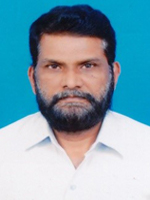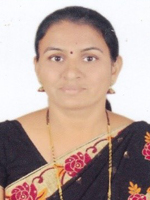
Dhule is located in the North of Maharashtra. The total population of Dhule district as per the 2011 census is 20.51 lakh. The population of Scheduled Tribes is 6.47 lakh respectively which constitutes 31.56% of the total population of the district. Dhule is a predominantly rural district - out of the total Dhule population for 2011 census, only 27.84 percent lives in urban regions of district whereas 72.16 % population of Dhule districts lives in rural areas of villages. (District census handbook of Dhule District)
The Dhule district has high incidence of poverty and disparities in key social indicators. As per the HDI (Human Development Index) 2012 Report, the district is categorized in the lowest quartile in Maharashtra State. The following are the findings about the district:
The College therefore initiated a field action project on 8 September 2016 firstly empower the marginalized groups to deal with their problems and secondly to provide practical experience to our students.. The Objectives of the Project are as follows.
Project Team
| Name & Designation | Contact | |
|---|---|---|
 |
Dr. Jalindar AdsuleProject DirectorEducational Qualifications : B.A. MSW, LL.B, Ph.D. Post - Doctorate |
E - Mail: jadsule@gmail.com |
 |
Prof. Rachna AdsuleProject CoordinatorEducational Qualifications: B.Sc. MSW, D.B.M, NET |
E - Mail: rachna_adsule@rediffmail.com |
 |
Smt. Sunita DeshmukhSocial WorkerEducational Qualifications: B.A, MSW |
E - Mail: patilsunita8282@gmail.com |
Objectives
- To empower the people for their educational, health and livelihood rights
- To conduct various training programs to develop leadership among youth, women and children
- To conduct research studies on problems related to rural and tribal population and publish literature related to it
- To network with organizations working on similar issues to strengthen and consolidate various initiatives
Project Team
The Project team consists of faculty member who is Honorary Coordinator of the Project of one part time staff, 20 students and volunteers. The Principal who is also the Honarary Project Director guides the Project.
Intervention
Currently, the Project is working with three villages – Kundane, Udane and Morane in Dhule Taluka. Here we are working with the tribal population, and Dalit communities who live in extreme poverty.
These communities lack basic amenities like water, toilets, drainage, electricity and health facilities. They mainly work as agricultural laborers with seasonal work and meager wages. They live below subsistence level and getting two square meals a day is a challenge for these families. They are victims of several superstitions and social customs. They have been totally isolated from the mainstream of development and life for them is a struggle for daily survival. Very few government schemes have been implemented in these villages.
This project is unique in many ways. While it has created a platform for the students to practice their field work and share their experiences and knowledge with each other, it also works towards resolving issues of the marginalized and further facilitates the academic development of the faculty supervising these students and keeps them in touch with the field.
Awareness campaigns on health, education, status of women etc, training programs for youth and women and study classes for improving the educational level of the students are organized. Health camps, dental camps and eye check –up camps are organized for the communities. A cloth bank has been initiated. Guidance and information about basic documents and Government Schemes is also provided.
In the course of work, it was necessary to work with the elderly who have been totally neglected and isolated. In this context, Aadhar was initiated.
AADHAR: A PROJECT FOR ELDERLY
Introduction
Elderly are an integral part of a population of any country who owe respect and attention equally like any other section. However, due to changing family structure and modernization, elderly population is facing inevitable challenges to live their life respectfully. Loneliness, negligence and less importance, illness due to ageing and against lack of treatment are the most of the treacherous conditions which elderly are facing.
The world demography is changing rapidly and soon there will be more old people than children and even more people at extreme old age than in the past. People live longer and population of older people is increasing (WHO, National Institute on Aging 2011). Advancement in medical care, higher standard of living, advanced in technology and low birth rate especially in the developed countries are some of the factors that are fueling the demographic changes.
Ageing in India is exponentially increasing due to increased life expectancy. With the rise in elderly population, the demand for holistic care tends to grow. The 'Elderly in India 2016' report by Ministry of Statistics and Programme Implementation said: The life expectancy at birth during 2009-13 was 69.3 for women as against 65.8 years for men. At the age of 60, average remaining length of life was found to be about 18 years (16.9 for men and 19.0 for women) and that at age 70 was less than 12 years (10.9 for men and 12.3 for women).
The report stated that the old-age dependency ratio climbed from 10.9 percent in 1961 to 14.2 per cent in 2011 for India as a whole. For females and males, the value of the ratio was 14.9 per cent and 13.6 per cent in 2011.Between rural and urban ratios there has been considerable difference in all the periods and this may be due to relatively higher concentration of working age population in urban areas. (“Number of elderly rises,” 2016)
At present the population of senior citizens in Maharashtra is nearly 1.25 crore.
The traditional Indian society and the age-old joint family system have been instrumental in safeguarding the social and economic security of the elderly people in the country. However, with the rapid changes in the social scenario and the emerging prevalence of nuclear family set-ups in India in recent years the elderly people are likely to be exposed to emotional, physical and financial insecurity in the years to come. This has drawn the attention of the policy makers and administrators at central and state governments, voluntary organizations and civil society. (Jeyalakshmi, Chakraborti, Gupta, 2011)
Very old people, due to their reduced mobility and debilitating disabilities, need other people to do things for them. With the increasing trend of nuclear families in the society and with fewer children in the family, the care of older persons in the families gets increasingly difficult. Therefore, it is necessary to safeguard the elderly people who are absolutely neglected, ill-treated and vulnerable.
About the Project Area
The situation of elderly is no different in Dhule, which is one of the most backward and under developed districts of Maharashtra. The Dhule district has high incidence of poverty and disparities in key social indicators. As per the HDI (Human Development Index) 2012 Report, the district is categorized in the lowest quartile in Maharashtra State.
The project was initiated on November 01, 2019 Initially with the Tribal elderly in Vishwas Nagar of Kundane village, which is located in Dhule district and Dhule taluka. It is just10 km away fom Dhule city. This village is close to Nagpur Surat Highway. The village Panchayat came into existence in 1959. This village is located on the bank of a small river – Panjra which is dry most of the time.
The total population of the village is 3100, of which1900 are males and 1200 are females. The children below age of 06 are 533. There are 511 houses in the village. There are 311 families which belong to the general category, 60 SC families, 79 ST families and 261 families are below poverty line. The literacy rate of the village is 68.13%, the male literacy rate being 75% and female literacy rate being 60%. The Bhil community resides outside the village and it is located almost half a kilometer away from the main village. There is a road connecting the village to the city.
Objectives of the Project
- To prepare a database of the elderly
- To create sensitivity about elderly in the community
- To ensure adequate nourishment and clothes for the poor helpless and destitute elderly persons.
- To create health awareness and ensure access to health care for the elderly.
- To create a ‘Support Group’ of the elderly
- To provide recreational activities and mental support, to the elderly
- Awareness and implementation of government schemes for the elderly
Activities and Programs
- As a part of primary care, risk assessment, counseling on health, social adjustment and personal problems would be provided to the elderly.
- Diet and nutrition related interventions:
- Nutritional education
- Demonstrations on preparation low cost nutritious food
- Education on food hygiene
- Environmental sanitation
- Health Check – up Camps and Clinics
- Awareness and implementation of the different government schemes for the elderly.
- Cloth Bank
- Group Recreational Activities
- Sensitivity about elderly
- Street plays
- Posters
- Talks
